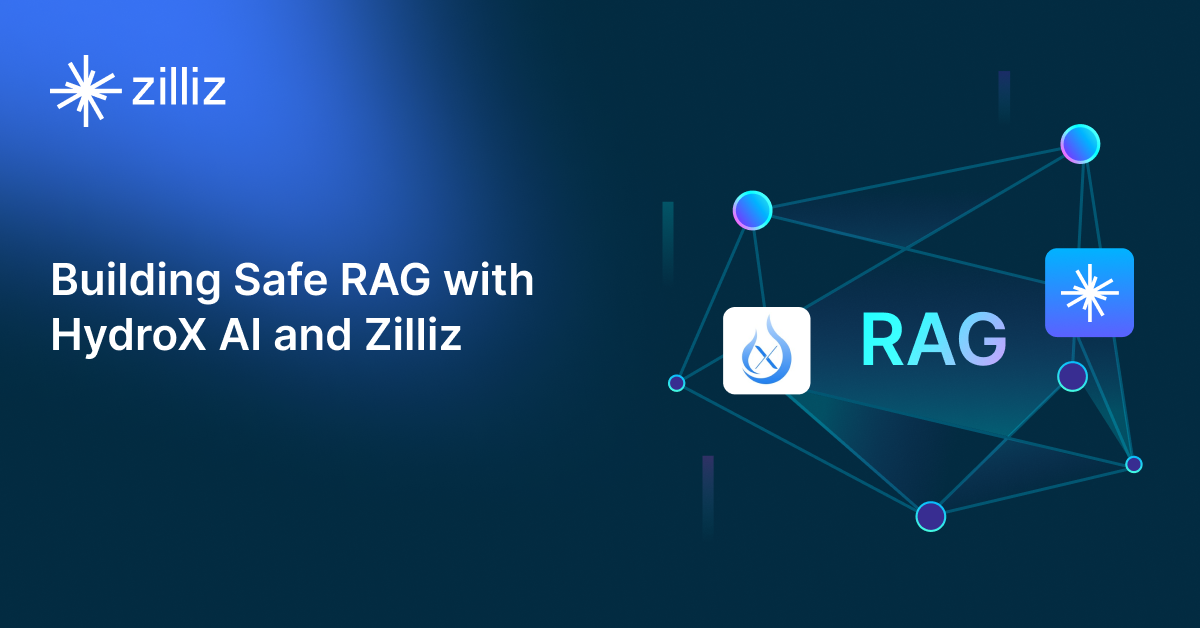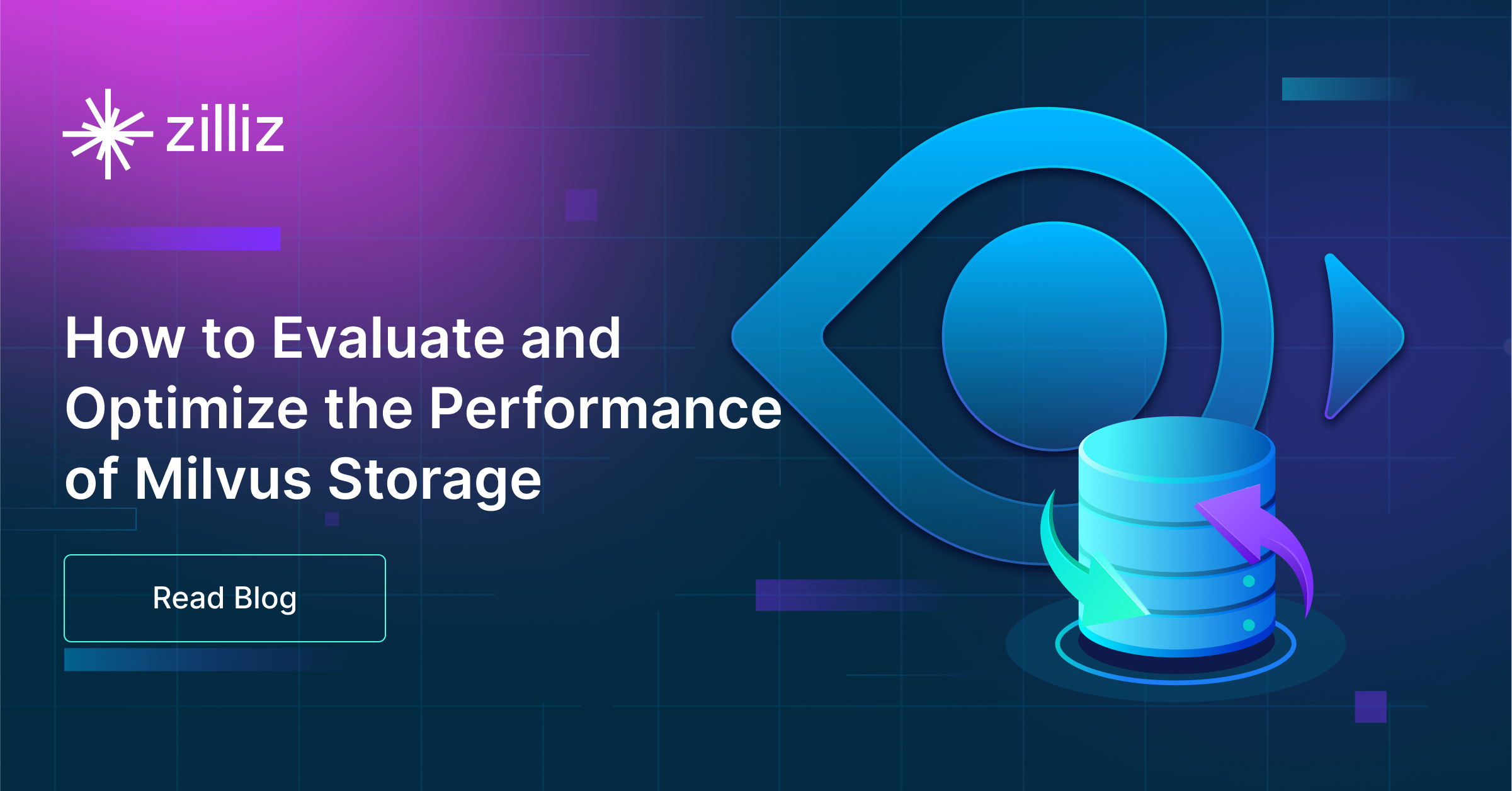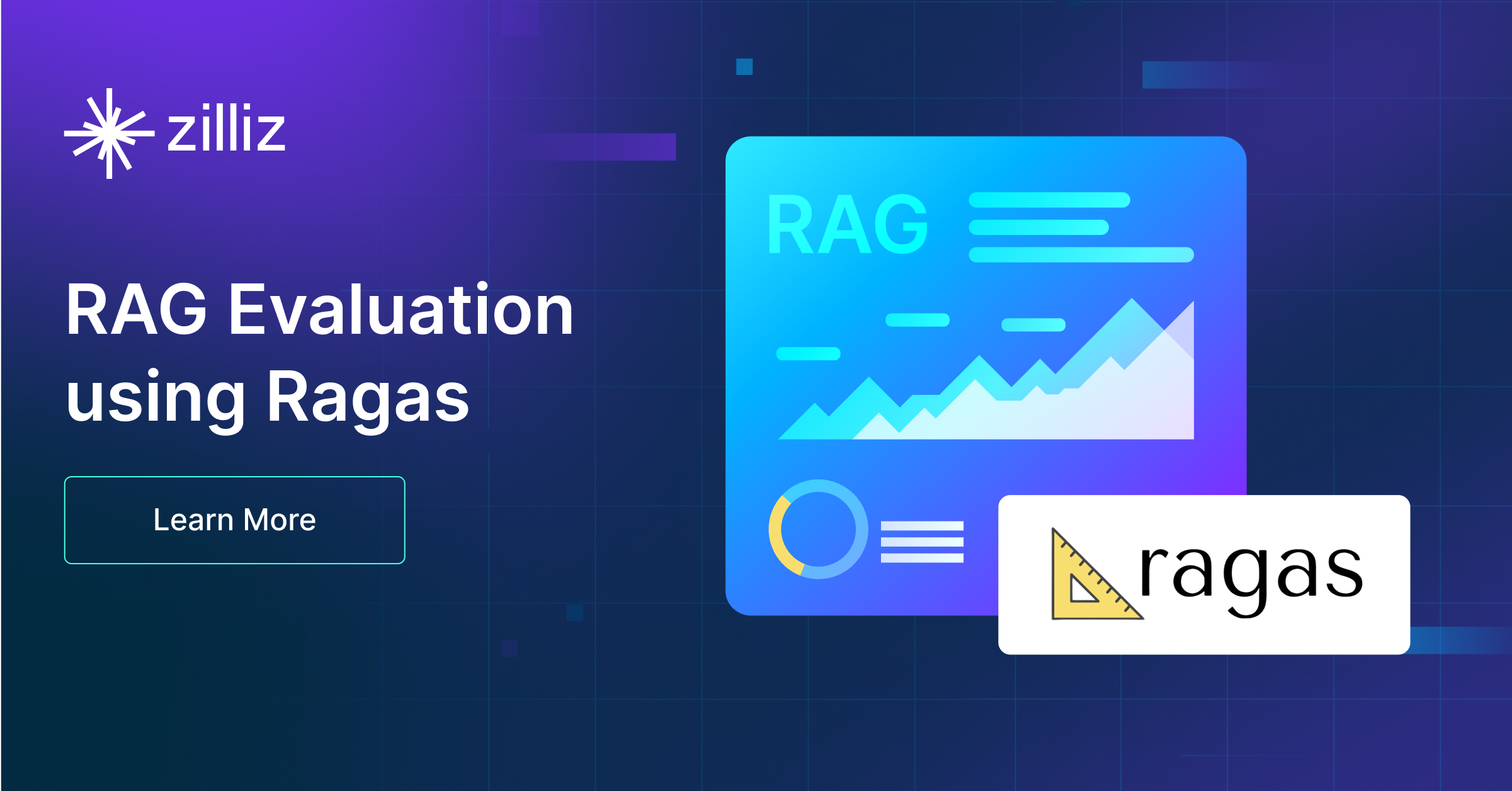Build RAG Chatbot with LangChain, Faiss, Google Vertex AI Claude 3.5 Haiku, and NVIDIA llama-3.2-nv-embedqa-1b-v2
Introduction to RAG
Retrieval-Augmented Generation (RAG) is a game-changer for GenAI applications, especially in conversational AI. It combines the power of pre-trained large language models (LLMs) like OpenAI’s GPT with external knowledge sources stored in vector databases such as Milvus and Zilliz Cloud, allowing for more accurate, contextually relevant, and up-to-date response generation. A RAG pipeline usually consists of four basic components: a vector database, an embedding model, an LLM, and a framework.
Key Components We'll Use for This RAG Chatbot
This tutorial shows you how to build a simple RAG chatbot in Python using the following components:
- LangChain: An open-source framework that helps you orchestrate the interaction between LLMs, vector stores, embedding models, etc, making it easier to integrate a RAG pipeline.
- Faiss: also known as Facebook AI Similarity Search, is an open-source vector search library that allows developers to quickly search for semantically similar multimedia data within a massive dataset of unstructured data. (If you want a much more scalable solution or hate to manage your own infrastructure, we recommend using Zilliz Cloud, which is a fully managed vector database service built on the open-source Milvus and offers a free tier supporting up to 1 million vectors.)
- Google Vertex AI Claude 3.5 Haiku: This advanced AI model leverages Google's Vertex AI platform, offering robust capabilities for natural language processing and data analysis. Notable for its versatility and scalability, it excels in complex tasks like content generation and sentiment analysis, making it ideal for enterprises aiming to enhance decision-making with AI-driven insights.
- NVIDIA llama-3.2-nv-embedqa-1b-v2: This AI model is designed for advanced question-answering tasks, leveraging NVIDIA's LLaMA architecture. It excels in embedding-based question retrieval and provides high accuracy in understanding context. Ideal for knowledge-intensive applications, it enhances customer support, educational tools, and research assistance.
By the end of this tutorial, you’ll have a functional chatbot capable of answering questions based on a custom knowledge base.
Note: Since we may use proprietary models in our tutorials, make sure you have the required API key beforehand.
Step 1: Install and Set Up LangChain
%pip install --quiet --upgrade langchain-text-splitters langchain-community langgraph
Step 2: Install and Set Up Google Vertex AI Claude 3.5 Haiku
pip install -qU "langchain[google-vertexai]"
# Ensure your VertexAI credentials are configured
from langchain.chat_models import init_chat_model
llm = init_chat_model("claude-3-5-haiku@20241022", model_provider="google_vertexai")
Step 3: Install and Set Up NVIDIA llama-3.2-nv-embedqa-1b-v2
pip install -qU langchain-nvidia-ai-endpoints
import getpass
import os
if not os.environ.get("NVIDIA_API_KEY"):
os.environ["NVIDIA_API_KEY"] = getpass.getpass("Enter API key for NVIDIA: ")
from langchain_nvidia_ai_endpoints import NVIDIAEmbeddings
embeddings = NVIDIAEmbeddings(model="nvidia/llama-3.2-nv-embedqa-1b-v2")
Step 4: Install and Set Up Faiss
pip install -qU langchain-community
from langchain_community.vectorstores import FAISS
vector_store = FAISS(embedding_function=embeddings)
Step 5: Build a RAG Chatbot
Now that you’ve set up all components, let’s start to build a simple chatbot. We’ll use the Milvus introduction doc as a private knowledge base. You can replace it with your own dataset to customize your RAG chatbot.
import bs4
from langchain import hub
from langchain_community.document_loaders import WebBaseLoader
from langchain_core.documents import Document
from langchain_text_splitters import RecursiveCharacterTextSplitter
from langgraph.graph import START, StateGraph
from typing_extensions import List, TypedDict
# Load and chunk contents of the blog
loader = WebBaseLoader(
web_paths=("https://milvus.io/docs/overview.md",),
bs_kwargs=dict(
parse_only=bs4.SoupStrainer(
class_=("doc-style doc-post-content")
)
),
)
docs = loader.load()
text_splitter = RecursiveCharacterTextSplitter(chunk_size=1000, chunk_overlap=200)
all_splits = text_splitter.split_documents(docs)
# Index chunks
_ = vector_store.add_documents(documents=all_splits)
# Define prompt for question-answering
prompt = hub.pull("rlm/rag-prompt")
# Define state for application
class State(TypedDict):
question: str
context: List[Document]
answer: str
# Define application steps
def retrieve(state: State):
retrieved_docs = vector_store.similarity_search(state["question"])
return {"context": retrieved_docs}
def generate(state: State):
docs_content = "\n\n".join(doc.page_content for doc in state["context"])
messages = prompt.invoke({"question": state["question"], "context": docs_content})
response = llm.invoke(messages)
return {"answer": response.content}
# Compile application and test
graph_builder = StateGraph(State).add_sequence([retrieve, generate])
graph_builder.add_edge(START, "retrieve")
graph = graph_builder.compile()
Test the Chatbot
Yeah! You've built your own chatbot. Let's ask the chatbot a question.
response = graph.invoke({"question": "What data types does Milvus support?"})
print(response["answer"])
Example Output
Milvus supports various data types including sparse vectors, binary vectors, JSON, and arrays. Additionally, it handles common numerical and character types, making it versatile for different data modeling needs. This allows users to manage unstructured or multi-modal data efficiently.
Optimization Tips
As you build your RAG system, optimization is key to ensuring peak performance and efficiency. While setting up the components is an essential first step, fine-tuning each one will help you create a solution that works even better and scales seamlessly. In this section, we’ll share some practical tips for optimizing all these components, giving you the edge to build smarter, faster, and more responsive RAG applications.
LangChain optimization tips
To optimize LangChain, focus on minimizing redundant operations in your workflow by structuring your chains and agents efficiently. Use caching to avoid repeated computations, speeding up your system, and experiment with modular design to ensure that components like models or databases can be easily swapped out. This will provide both flexibility and efficiency, allowing you to quickly scale your system without unnecessary delays or complications.
Faiss Optimization Tips
To enhance the performance of the Faiss library in a Retrieval-Augmented Generation (RAG) system, begin by selecting the appropriate index type based on your data volume and query speed requirements; for example, using an IVF (Inverted File) index can significantly speed up queries on large datasets by reducing the search space. Optimize your indexing process by using the nlist parameter to partition data into smaller clusters and set an appropriate number of probes (nprobe) during retrieval to balance between speed and accuracy. Ensure the vectors are properly normalized and consider using 16-bit or 8-bit quantization during indexing to reduce memory footprints for large datasets while maintaining reasonable retrieval accuracy. Additionally, consider leveraging GPU acceleration if available, as Faiss highly benefits from parallel processing, leading to faster nearest neighbor searches. Continuous fine-tuning and benchmarking with varying parameters and configurations can guide you in finding the most efficient setup specific to your data characteristics and retrieval requirements.
Google Vertex AI Claude 3.5 Haiku optimization tips
Claude 3.5 Haiku on Google Vertex AI is optimized for both efficiency and improved response quality. Enhance retrieval by applying relevance filtering before passing documents to the model. Keep prompts structured with clear separators between user queries and retrieved context. Adjust temperature (0.1–0.3) for optimal factual accuracy while tuning top-p for output control. Use Google Cloud’s serverless scaling to handle large query loads without performance degradation. Implement caching strategies for frequently requested information to reduce redundant API calls. If used alongside larger models, deploy Haiku for rapid responses in latency-sensitive scenarios, reserving complex reasoning for higher-tier models.
NVIDIA llama-3.2-nv-embedqa-1b-v2 optimization tips
To optimize the performance of the NVIDIA llama-3.2-nv-embedqa-1b-v2 in a Retrieval-Augmented Generation setup, consider employing mixed precision training to enhance computational efficiency while maintaining model accuracy. Utilize efficient indexing and retrieval methods, such as FAISS, to quickly access relevant documents, minimizing response time. Tune the hyperparameters, especially the learning rate and batch size, based on validation metrics to improve convergence speed. Implement caching strategies to store frequently accessed data and results for faster retrieval. Regularly profile the model to identify bottlenecks and make necessary adjustments. Finally, leverage NVIDIA’s TensorRT for optimized inference, ensuring that your setup benefits from accelerated performance on compatible hardware.
By implementing these tips across your components, you'll be able to enhance the performance and functionality of your RAG system, ensuring it’s optimized for both speed and accuracy. Keep testing, iterating, and refining your setup to stay ahead in the ever-evolving world of AI development.
RAG Cost Calculator: A Free Tool to Calculate Your Cost in Seconds
Estimating the cost of a Retrieval-Augmented Generation (RAG) pipeline involves analyzing expenses across vector storage, compute resources, and API usage. Key cost drivers include vector database queries, embedding generation, and LLM inference.
RAG Cost Calculator is a free tool that quickly estimates the cost of building a RAG pipeline, including chunking, embedding, vector storage/search, and LLM generation. It also helps you identify cost-saving opportunities and achieve up to 10x cost reduction on vector databases with the serverless option.
 Calculate your RAG cost
Calculate your RAG cost
What Have You Learned?
By diving into this tutorial, you’ve unlocked the power of combining cutting-edge tools to build a RAG system that feels almost magical! You learned how LangChain acts as the glue, seamlessly connecting your pipeline components while orchestrating workflows like document loading, chunking, and context-aware prompting. With FAISS as your vector database, you discovered how blazing-fast similarity searches transform unstructured data into actionable insights—no more sifting through mountains of text manually. The NVIDIA llama-3.2-nv-embedqa-1b-v2 embedding model became your secret weapon, converting words into rich numerical representations that capture meaning and context, while Google Vertex AI’s Claude 3.5 Haiku blew you away with its ability to generate precise, human-like answers by synthesizing retrieved context with its vast knowledge.
But this wasn’t just about assembling parts—you leveled up with pro tips like optimizing chunk sizes for balance between relevance and speed, using metadata to filter results, and even calculating costs with a free RAG cost calculator to keep your projects budget-friendly. Imagine what’s next: building chatbots that cite sources, creating research tools that feel like collaborators, or crafting AI assistants that truly understand nuance. The skills you’ve gained aren’t just theoretical—they’re a launchpad. So fire up your IDE, experiment with tweaks, and let your creativity run wild. The world of RAG is yours to shape, optimize, and innovate in. Ready to build something unforgettable? Let’s go! 🚀
Further Resources
🌟 In addition to this RAG tutorial, unleash your full potential with these incredible resources to level up your RAG skills.
- How to Build a Multimodal RAG | Documentation
- How to Enhance the Performance of Your RAG Pipeline
- Graph RAG with Milvus | Documentation
- How to Evaluate RAG Applications - Zilliz Learn
- Generative AI Resource Hub | Zilliz
We'd Love to Hear What You Think!
We’d love to hear your thoughts! 🌟 Leave your questions or comments below or join our vibrant Milvus Discord community to share your experiences, ask questions, or connect with thousands of AI enthusiasts. Your journey matters to us!
If you like this tutorial, show your support by giving our Milvus GitHub repo a star ⭐—it means the world to us and inspires us to keep creating! 💖
- Introduction to RAG
- Key Components We'll Use for This RAG Chatbot
- Step 1: Install and Set Up LangChain
- Step 2: Install and Set Up Google Vertex AI Claude 3.5 Haiku
- Step 3: Install and Set Up NVIDIA llama-3.2-nv-embedqa-1b-v2
- Step 4: Install and Set Up Faiss
- Step 5: Build a RAG Chatbot
- Optimization Tips
- RAG Cost Calculator: A Free Tool to Calculate Your Cost in Seconds
- What Have You Learned?
- Further Resources
- We'd Love to Hear What You Think!
Content
Vector Database at Scale
Zilliz Cloud is a fully-managed vector database built for scale, perfect for your RAG apps.
Try Zilliz Cloud for Free


